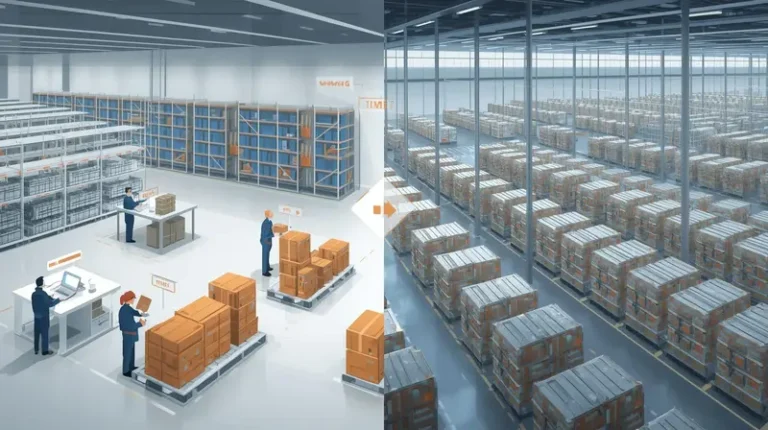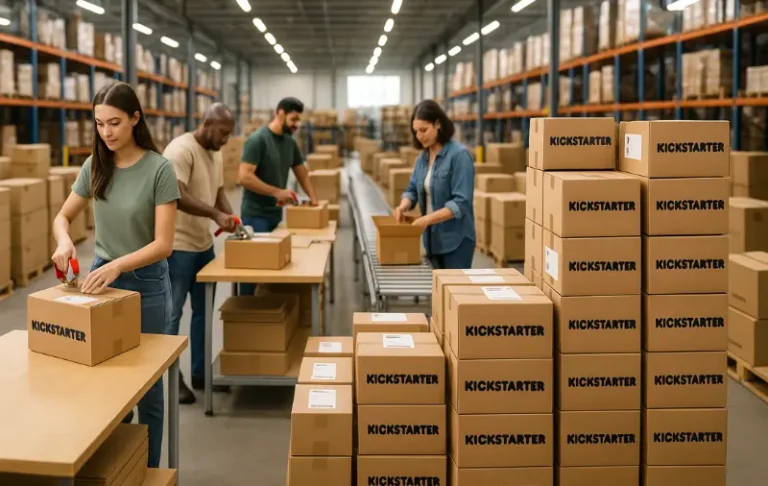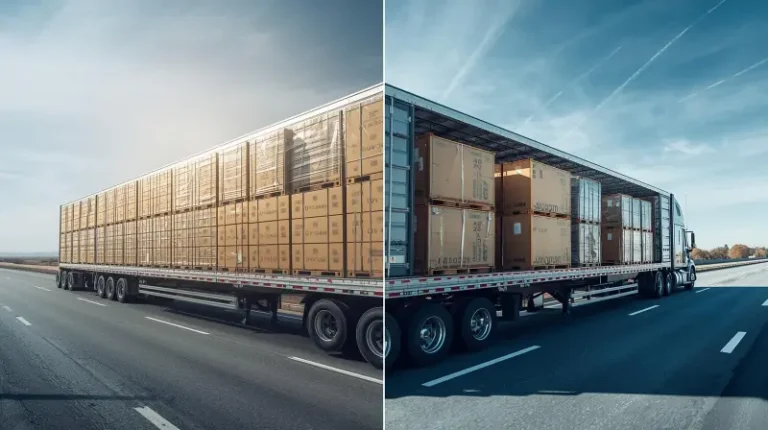Amazon SFP: Profit Math, Pitfalls, and the Smarter Alternative

Last updated on August 18, 2025

In this article
 7 minutes
7 minutes
- What SFP Actually Demands For The Prime Badge In 2025
- The Hidden SFP Shipping Costs Stack
- SFP vs FBM vs Cahoot: The Margin View
- A Simple Seller Fulfilled Prime Program Decision Tree
- Three Operational Truths Nobody Tells You
- How To Win With Prime Customers, Whether You Choose SFP Or Not
- Frequently Asked Questions
Short answer, yes, Seller Fulfilled Prime can work in 2025. As part of the broader Amazon Prime program, Seller Fulfilled Prime (SFP) is a fulfillment option that allows third-party sellers to fulfill Prime orders directly from their own warehouses. Here’s how Seller Fulfilled Prime works: sellers manage their own inventory and shipping, but still offer customers the Prime badge, fast free delivery, and a premium experience, without using Amazon’s FBA warehouses. This approach can help sellers reach Prime customers, control storage costs, and enhance brand recognition.
Longer answer, it depends on whether you can hit strict speed, coverage, and quality metrics while keeping shipping costs from eating your margin. The 2025 refresh tightened rules again, added weekend coverage checks, and introduced volume floors. Ultimately, the decision to use SFP should be based on your business model and your ability to meet the program’s requirements.
Slash Your Fulfillment Costs by Up to 30%
Cut shipping expenses by 30% and boost profit with Cahoot's AI-optimized fulfillment services and modern tech —no overheads and no humans required!
I'm Interested in Saving Time and MoneyWhat SFP Actually Demands For The Prime Badge In 2025
To join SFP, sellers must have a professional selling account to enroll in Seller Fulfilled Prime. Sellers must pre-qualify, then pass a 30-day seller fulfilled prime trial, also referred to as the prime trial, trial period, or prime trial period. During this phase, sellers must fulfill a certain number of prime trial orders and meet strict performance metrics: at least 93.5% on-time delivery, 99% valid tracking, ≤0.5% seller-initiated cancellations, and a steady baseline of 100 Prime packages per month after enrollment. Sellers must also have a default shipping address in the US to enroll in seller fulfilled prime. Weekend operations are monitored, and Prime offers must cover the contiguous U.S. with competitive two-day delivery speeds where feasible.
Sellers must meet all seller fulfilled prime requirements and prime requirements to maintain eligibility in the program. As part of the enrollment and management process, sellers configure shipping settings in Seller Central to ensure compliance with Prime standards. Successful completion of the trial allows sellers to gain access to Prime customers and the Prime badge, increasing product visibility and sales potential.
Amazon has also announced 2025 program updates (effective late June) impacting SFP and Premium Shipping, including policy clarifications and protections when Amazon sets promises and you ship on time using eligible labels. Great when it applies, but you still own the ops.
The Hidden SFP Shipping Costs Stack
SFP’s trap is simple. You keep inventory in your own warehouse or with a third-party logistics provider, you display the Prime badge, and you own the fulfillment process. Having sufficient fulfillment capacity is crucial for meeting the strict requirements of the Seller Fulfilled Prime program. Amazon sellers and third-party sellers can fulfill orders themselves or partner with third-party logistics providers to handle shipping and storage. Miss a weekend pickup, mis-estimate a lane, or under-optimize cartons, and your Prime orders get expensive fast. Fulfilling orders efficiently is critical for maintaining Prime status and being a successful Prime seller. Enrolled in Seller Fulfilled Prime, sellers can make Seller Fulfilled Prime offers and must ensure they are offering free shipping, which is a key benefit for customers and a requirement for SFP. Maintaining Prime status requires ongoing compliance with program standards.
- Weekend staffing: You must operate at least one weekend day and use shipping services with weekend pickup/delivery coverage.
- Nationwide promise pressure: Standard nationwide shipping for all Prime offers, plus competitive 1–2 day promise exposure in many ZIPs.
- Order-limit throttling: If you don’t maintain volume and speed, Amazon can clamp your daily Prime order limit until you recover. (Commonly cited by program trackers.)
In other words, SFP is feasible when you have multi-node coverage, tight inventory management, and smart routing. Both third-party Amazon sellers and Amazon sellers can choose between FBA, FBM, and the Seller Fulfilled Prime program depending on their business needs. If not, Fulfillment by Amazon (FBA) or FBM + Cahoot may deliver better customer satisfaction and profit.
Looking for a New 3PL? Start with this Free RFP Template
Cut weeks off your selection process. Avoid pitfalls. Get the only 3PL RFP checklist built for ecommerce brands, absolutely free.
Get My Free 3PL RFPSFP vs FBM vs Cahoot: The Margin View
FBM vs FBA gives you control and lower platform fees, but you lose the Prime badge and must maintain reliable delivery standards for your sales channels. FBM operates through the merchant fulfilled network, where sellers handle storage, packing, and shipping themselves, taking on full responsibility for logistics and customer service. FBA buys you Prime eligibility and leverages Amazon’s fulfillment centers, large warehouses where Amazon stores your inventory, manages packing, shipping, and customer service, streamlining the process and boosting sales potential, though storage and handling fees can be painful for slow-moving or oversized SKUs. SFP sits in the middle, delivering the Prime badge with your own ops, but only if you can truly run a Prime-class network. Market watchers note that overall Amazon competition has eased from 2021 highs, which helps conversion if you can deliver fast and free shipping reliably.
Where Cahoot fits: we turn FBM into something closer to SFP economics by routing to the best node and carrier for each order, including weekends, so your on-time delivery and valid tracking rate can match SFP expectations without carrying SFP’s strict nationwide promise liability yourself.
A Simple Seller Fulfilled Prime Program Decision Tree
- Under 2 lb, high-velocity, small parcel, steady volume ≥100 Prime orders/month? Consider SFP, but only with multi-node and weekend ops.
- Oversize, seasonal, or irregular demand? FBA or FBM + Cahoot.
- Multi-channel beyond Amazon (Walmart, Shopify, eBay)? SFP adds complexity with thin payoff; FBM + Cahoot preserves control.
Three Operational Truths Nobody Tells You
1. Weekend promise math is unforgiving. Your shipping template, carrier weekend capabilities, and pickup windows must align. If the template shows Saturday pickup, non-Prime orders in that template often inherit weekend obligations too, and some orders may require same-day shipping to meet Prime and SFP requirements. Plan staffing and cutoffs accordingly.
2. Prime shipping templates are critical for SFP. Setting up a Prime shipping template in Seller Central is essential to qualify for Prime orders and optimize costs. Configuring shipping templates properly enables Prime shipping and ensures you meet required shipping speed and delivery speed metrics for Seller Fulfilled Prime. When fulfilling orders, use shipping labels purchased through Amazon Buy Shipping Services to streamline order fulfillment, shipment tracking, and reliable delivery through Amazon’s trusted network.
3. Nationwide coverage isn’t optional. Even for standard shipping, SFP requires contiguous U.S. coverage. If your single node sits on the coast, your cost to keep 1 and 2-day exposure jumps.
Scale Faster with the World’s First Peer-to-Peer Fulfillment Network
Tap into a nationwide network of high-performance partner warehouses — expand capacity, cut shipping costs, and reach customers 1–2 days faster.
Explore Fulfillment NetworkHow To Win With Prime Customers, Whether You Choose SFP Or Not
- Build weekend operating muscle with clear cutoffs and carrier mix.
- Add nodes or enable peer-to-peer fulfillment to collapse zones.
- Automate cartonization and rate-shop every label.
- Set conservative daily caps so you don’t over-promise on major sales events.
- Optimize your Prime listings to increase visibility, display the Prime badge, and boost conversions.
- Align your operations to reflect Prime customers expectations, ensuring your service levels and delivery quality meet what Prime customers anticipate.
- Leverage SFP to deliver directly to domestic Prime customers from your own warehouse, enhancing brand recognition and customer satisfaction.
- Use Cahoot to meet Prime customers’ expectations without locking into SFP for every SKU.
Frequently Asked Questions
What are the 2025 SFP performance requirements?
Expect 93.5% on-time delivery, 99% valid tracking, ≤0.5 percent seller-initiated cancellations, weekend operations, and steady volume of at least 100 Prime packages per month post-enrollment.
Do I have to ship on weekends for SFP?
Yes. SFP policies require weekend operations, plus carriers that support weekend pickup and delivery. Templates and coverage must match your actual capability.
Is SFP cheaper than FBA?
Depends on your cube, weight, and geography. SFP can be cheaper for compact, fast-moving SKUs when you run multi-node fulfillment. For bulky or slow movers, FBM + Cahoot or selective FBA often wins.
What’s new in the 2025 SFP rules?
Amazon issued program updates and clarified protections when promises are Amazon-set and you ship on time with eligible labels. There are also policy refreshes effective June 29, 2025.
How does Cahoot help with SFP, FBM, and FBA?
We route every order to the fastest, cheapest compliant path, maintain weekend coverage with regional carriers, and provide the inventory management and fulfillment partner capabilities you need to protect metrics and margin.

Turn Returns Into New Revenue





